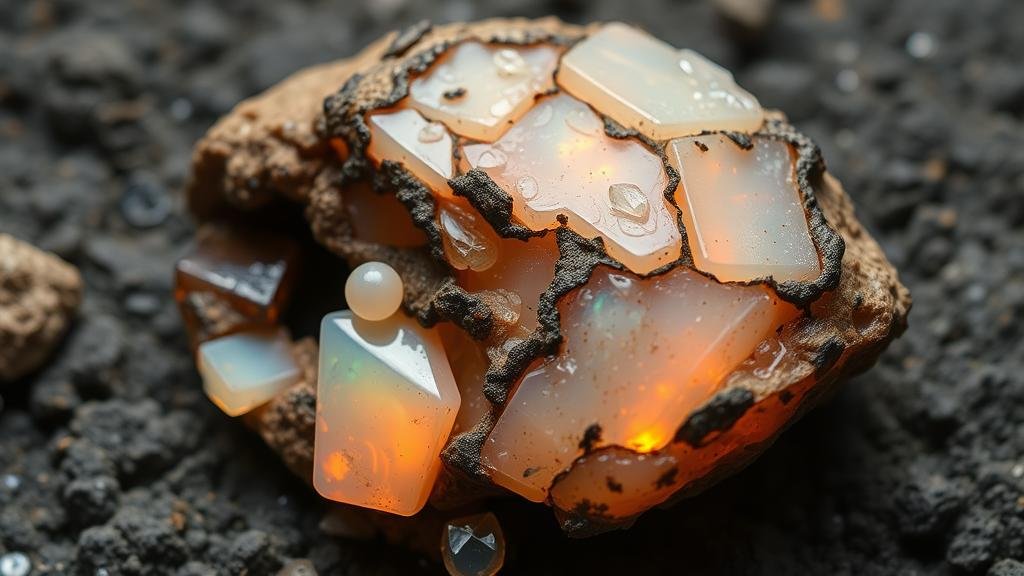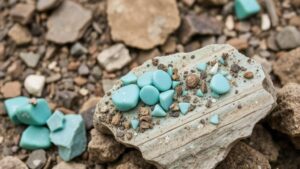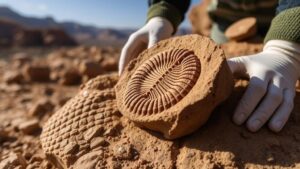The Fire of Opal Fossils: Marine Relics Turned into Gemstone Treasures
The Fire of Opal Fossils: Marine Relics Turned into Gemstone Treasures
For rockhounds and mineral collectors, the allure of opal fossils lies not only in their striking beauty but also in their unique geological history. These captivating gemstones are formed from the fossilized remains of marine organisms, primarily created within the silica-rich deposits of ancient seabeds. Understanding their formation and significance enriches the appreciation of these treasures and enhances the collecting experience.
Formation of Opal Fossils
Opal fossils originate from the remains of marine life, such as shells and coral. Over millions of years, when these organisms die, their remains may become buried beneath layers of sediment. The key factors in both the fossilization and opal formation involve:
- The accumulation of silica-rich mineral deposits in the ocean.
- The gradual percolation of groundwater through these layers, which contains silica in solution.
- The slow deposition of silica, which eventually replaces the original organic structures with opaline silica.
This intricate process can take thousands to millions of years, resulting in the vibrant colors and patterns seen in opal fossils today. Statistically, it is estimated that around 3% of all opals contain fossilized material, making them exceptionally rare and desirable.
Characteristics of Opal Fossils
The aesthetic appeal of opal fossils stems from their unique optical features and the remnants of ancient marine life embedded within them. Key characteristics include:
- Color Play: Opals exhibit a phenomenon called play-of-color due to their internal structure, which diffracts light to create a spectrum of colors.
- Fossil Detail: The visible remnants of marine organisms add a historical context to each piece, often showcasing beautiful structures like ammonites or coral formations.
- Hardness: Opals typically rate 5.5 to 6.5 on the Mohs scale, indicating they are relatively soft and should be handled with care.
These characteristics not only make opal fossils captivating display pieces but also fascinating subjects of study for both scientists and collectors.
Geographic Locations and Collecting Tips
Opal fossils can be found in various locations across the globe, but some of the most noteworthy sources include:
- Australia: The worlds largest producer of opal, particularly the Coober Pedy and Lightning Ridge regions.
- Brazil: Known for its vivid colors and diverse fossil content.
- United States: Limited sources, notably in Nevada and Oregon, often yield unique specimens.
For collectors venturing into the world of opal fossils, consider these practical tips:
- Research: Familiarize yourself with the geological formations and known deposits of opal fossils.
- Join Communities: Engage with local rockhounding groups or online forums to share experiences and gain knowledge.
- Invest in Equipment: Careful cleaning and preservation of fragile fossils require appropriate tools, such as soft brushes and silica gel for humidity control.
Real-World Applications and Value
The value of opal fossils can vary significantly based on factors such as color, clarity, and the complexity of the fossil detail. High-quality specimens have been known to command prices upwards of several thousand dollars, especially when they exhibit striking fire colors unique to opal.
Also to aesthetic appeal, opal fossils have implications in both scientific research and education. Paleontologists utilize these fossils to understand past marine environments, while collectors benefit from their educational value and the historical narrative they tell.
Conclusion and Takeaways
The fire of opal fossils illuminates the intricate connection between geology and marine history. For rockhounds and collectors, these gemstone treasures offer a window into the past while serving as stunning display pieces. With a deeper understanding of their formation, characteristics, and proper collecting techniques, enthusiasts can not only enhance their personal collections but also contribute to the appreciation of these remarkable natural artifacts.
To wrap up, when considering an addition to your collection, remember to:
- Assess the historical and geological significance of each piece.
- Engage with the collecting community for knowledge and networking.
- Handle opal fossils with care due to their relative softness.
By following these guidelines, collectors can fully appreciate the beauty and historical context of opal fossils, transforming them from mere items into treasures of the earth.



